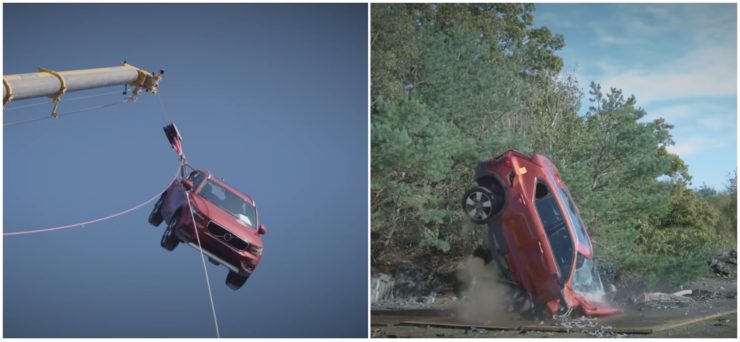
Volvo has been a pioneer in vehicular safety, always pushing the limits in the quest to improve safety. Over the years, the Swedish carmaker has given the world some extremely important safety features, like three-point seatbelts, curtain airbags, rollover protection system, blindspot monitoring system, pedestrian detection, automatic emergency braking, etc. Now, the manufacturer has gone ahead and done an incredibly unique crash test – a 30-foot vertical drop.
This vertical crash, however, isn’t to determine the safety of Volvo cars. Instead, this test was conducted to help Swedish rescue authorities test their tools and develop effective methods to extract people involved in high-speed car crashes. A total of 10 Volvo vehicles, all different models, were subjected to the vertical crash, helping simulate different accident scenarios.
Such high speed crashes often leave people in critical condition, and rescue teams have to be quick and effective in order to save their lives. Volvo’s involvement has helped the Swedish authorities study these crashes and be prepared for them, and thus potentially helping save a lot of lives.
Rescue teams often used accidental and scrap cars for safety training and research, and such vehicles can be up to two decades old. Vehicular safety technology has taken some major leaps and bounds in the last few years, and build quality of cars has also improved in general. As such, it is absolutely necessary for authorities to test their tools on the latest vehicles as well.
“We have been working closely together with the Swedish rescue services for many years,” says Håkan Gustafson, a senior investigator with the Volvo Cars Traffic Accident Research Team. “That is because we have the same goal: to have safer roads for all. We hope no one ever needs to experience the most severe accidents, but not all accidents can be avoided. So it is vital there are methods to help save lives when the most severe accidents do happen.”
All the findings and results of these crashes will be compiled in a detailed report, which will also be available for other rescue services and authorities to access. Thus, these tests will be beneficial not just for authorities in Sweden, but other countries as well.
This website uses cookies.